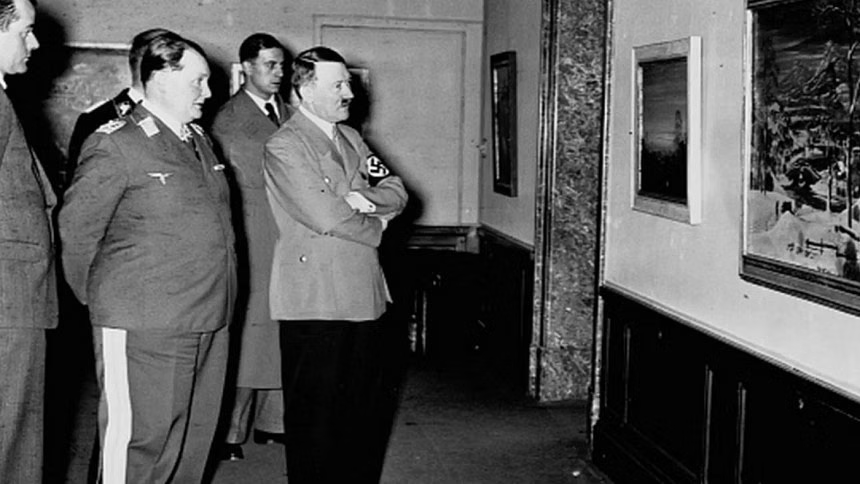Tagore’s Paintings Fell Victim to Nazi Purge of ‘Degenerate Art’

Rabindranath Tagore, Indian sub-continent`s first Nobel laureate in literature, is globally celebrated for his poetry, music, and philosophy. Yet, a lesser-known chapter of his legacy involves his modernist artworks being targeted by Adolf Hitler’s notorious “degenerate art” purge during the Nazi era in Germany.
In 1930, Tagore gifted five of his paintings to a prominent Berlin museum. These included vibrant, expressionist depictions of birds, human figures, and a girl in a red robe. The artworks were part of a larger European exhibition of over 300 pieces, showcased in cities such as Berlin, Paris, and London. During this period, Tagore was revered in Germany, with his works widely translated and the press referring to him as a “wise man from the East.”
However, by 1937, the cultural climate had changed dramatically. Under Hitler’s regime, the Nazis launched a sweeping campaign against what they deemed “degenerate art” — a category that encompassed modernist, surrealist, and expressionist works. Hitler, a failed artist himself, considered such styles to reflect mental illness and moral decay. Over 16,000 artworks by renowned figures such as Van Gogh and Man Ray were seized, banned, or destroyed.
Tagore’s paintings, which were stored at Berlin’s Crown Prince Palace in association with the National Gallery, were among the casualties of this purge. A 1937 Nazi “deportation list” records the removal of his five works from public view. By 1941–42, Nazi inventories marked two as “destroyed,” two as “exchanged,” and one left without status—suggesting its fate remains unknown.
Art historian Konstantin Wenzlaff notes that the missing piece, Two Birds, has not been traced. One painting once thought lost has been located in the Bavarian State Painting Collections in Munich since 1964. Oliver Kase, chief curator at the Pinakothek der Moderne, describes the piece — a half-shadowed human head — as “austere yet spiritual,” an example of the type of expression that Nazi ideology sought to eliminate.
Another of Tagore’s paintings resurfaced in 1996 when it was sold at auction to a private UK collector. Three additional works were reportedly returned to Tagore in India in 1939, although their exact location remains unclear. Art scholar R. Siva Kumar suggests that at least one may reside in the archives of Visva-Bharati University, the institution founded by Tagore in Santiniketan. However, no visual verification has been confirmed.
Tagore began painting in his sixties and created over 2,300 artworks in less than a decade before his death in 1941. His paintings drew from folk art, personal imagination, and global art movements like Art Nouveau. Often described as symbolic and expressionist, his art challenged the conservative aesthetics of colonial India and offered a unique vision of freedom and modernism.
During his lifetime, critics in 1930s Germany likened his visual style to European surrealists and expressionists — the very artists Hitler aimed to suppress. In doing so, the Nazi purge not only erased significant strands of European modernism but also obstructed the rightful recognition of Tagore’s art within the global canon.
As the world remembers Tagore’s death anniversary this month, the lost and displaced legacy of his art in Nazi Germany remains a haunting reminder of how regimes attempt to silence creativity — and how some stories survive, waiting to be rediscovered.






